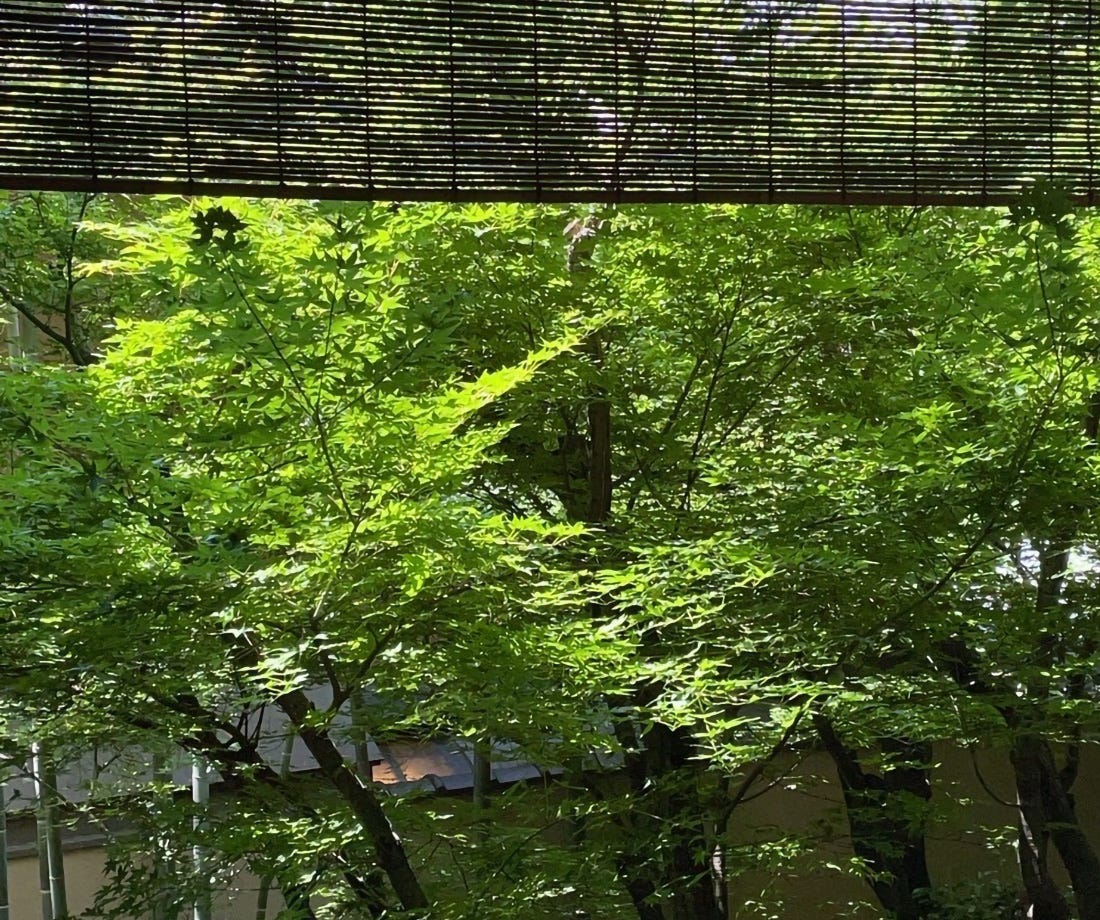
Introducing our new article series with writer Maha Harada. Dive deeper into the world of pearls through her essays and stories exclusive to Mikimoto.
Vol.3
My promise to Vermeer
If I get to see the exhibition, I’ll dedicate a story to it.
That’s the promise I made. To Vermeer.
As an art historian and writer, I found myself out of options in midwinter Amsterdam.
Desperate to see the sold-out Vermeer exhibition,
I rushed over from Paris without a plan...
Part 1
When I exited Amsterdam Central Station from the main entrance, a fierce wind was blowing through the streets. I immediately tightened the wool scarf around my neck. It wasn’t so cold in Paris where I came from, so here I was, wearing only a shirt under my coat. I should’ve layered up with a jumper, I thought. But it was too late.
I kept stamping my feet at the tram stop outside the station as I waited for the tram to arrive. It’s always the case that buses and trams take forever to come in these situations. Maybe there’s a rule where the more you eagerly wait for a tram, the longer it takes to arrive — something that only I didn’t know.
After finally boarding the tram, I rubbed the foggy window with my fingertips and watched the passing scenery. Tall brick houses lined the canal, tightly packed next to one another under the gray, heavy hanging clouds.
Winter hasn’t been so cold in Paris these days, perhaps due to global warming, but it was freezing in Amsterdam. Located much further north than Paris, this city still has a proper winter. I guess winter should be wintry after all, and we don’t always need sunshine, do we? While I was busy trying to brush off my disappointment at the weather, we arrived at Museumplein (“museum square”).
The tram stop was right in the middle of the street. On the south side of the street is a huge open lawn which is surrounded by three world-famous museums — Stedelijk Museum, Van Gogh Museum, and Rijksmuseum. The view of these three museums in one place was as spectacular as always.
Along the street, the banner of the Rijksmuseum was flapping in the wind. Printed on it was an extremely enlarged portion of a painting showing the neck area of a woman facing sideways. Exquisitely smooth skin, a string of pearls around the neck, and a large pearl earring dangling from her ear. In the center of the round pearls, light particles emanated a quiet glow. The pearls aren’t the main subject of the painting; they’re a part of a woman’s portrait. But these details make it instantly obvious to the passersby who the artist is behind this painting — Johannes Vermeer.
Many artists have painted portraits adorned with pearls throughout the history of Western art, but no one is as skilled as Johannes Vermeer at capturing the subtle light of pearls. His iconic masterpiece “Girl with a Pearl Earring” earned him the recognition as the “painter of pearls.” Of course, Vermeer did not only paint pearls on women. He also skillfully incorporated "light" in other forms and established his own unique painting style. However, nothing can compare to the elegance, gentleness, and beauty of the pearls that he depicts. It’s truly captivating how they contain light that seems to have crystallized all the good in the world. Hence the nickname “painter of pearls” — what an honorable title indeed.
Having gotten off the tram, I crossed the street to the opposite side of the museum square and spent a moment watching the fluttering banner. Then, feeling half lost and half bullish, I entered a hotel in the heart of the square.
Well, I’ve gotten this far, but now what? The reason why I came all the way to Amsterdam at the height of winter was to visit the Vermeer exhibition which recently opened at the Rijksmuseum. However, tickets are already sold out for the entire run lasting approximately four months. I missed out on buying a ticket but still made my way here to try my luck.
Three days ago in Paris, just past 8pm. Someone knocked on my study window. It almost made me jump as I was absorbed in writing a horror-type story with an imminent deadline. When I nervously opened the curtain, I found my neighbor and friend Stephanie waving at me on her bike. I quickly opened the window.
“I was just passing by and noticed your lights were on, so I figured you were back. When did you come back?”
Stephanie was on her way home from work. She cycles to her office near the Louvre Museum.
“I came back last weekend after being away for three months. You must be cold. Why don’t you come in for a bit?”
As an art historian and writer, I travel back and forth between Japan and Paris. I’ve known Stephanie since we both studied at École du Louvre. That might sound impressive, but I was just a summer course student while Stephanie properly graduated from there with a diploma. She currently works at the National Centre for Research and Restoration in French Museums; she’s a pro among the pros when it comes to art.
“It’s been a warm winter this year. Again, I should say,” Stephanie said as she settled down on the sofa in my study.
I brought over a bottle of Alsace wine that was starting to frost up in the fridge. I warned her it was too cold before opening the bottle. Still, she liked it, saying it was perfect for the warm winter.
“You came back at a good time. You know it just opened last weekend — the Vermeer exhibition.”
“What!” I exclaimed in surprise and responded, “Right, the Vermeer exhibition... I read about it online at the start of the year and I was thinking I should buy a ticket soon. I didn’t know it had already started. Where is it at again? Louvre?”
“Amsterdam,” Stephanie answered, and paused meaningfully before continuing, “I went to the opening reception.”
“What!” I exclaimed again. “Really? That’s amazing. I’m so jealous,” I spoke with a lot of emotion.
“I know right?”
Stephanie can’t seem to hide how proud she is. She can be innocent like a child sometimes.
“It was a brilliant exhibition. It wouldn’t have been possible anywhere other than the Rijksmuseum. No way. Not even the Louvre. They really did an amazing job.”
She’s really piquing my curiosity. I now had jealousy written all over my face.
“What made the exhibition so great? What was the best part of it?”
“Well, you know...” Stephanie deliberately kept on holding back the details to arouse my interest. “It’s difficult to explain in words. That’s what visual art is, right? You’ve got to see it. Go see it yourself. It’ll be a fierce battle for tickets. You need to get right to it and book your visit.”
After all that prodding, she drank up her wine and left like nothing had happened.
I immediately started searching on the internet with the words “Vermeer exhibition” and “purchase tickets.” Like Stephanie said, it was plain as day that everyone would be battling for tickets. As of now, there are only about 35 paintings in the world that are attributed to Vermeer. This exhibition will feature 28 of them. Anyone involved in art can imagine how big an accomplishment that is. While most of Vermeer’s works are held in museums, they’re considered the greatest treasure of every museum collection. No museum wants to disappoint their visitors, the majority of whom come to see Vermeer’s paintings. Plus, museums have no choice but to be cautious about the prospect of moving their artworks, even if only slightly. Various risks are involved in taking a painting off the wall, packing it in a mobile crate, loading it into the car, getting it on the plane, and making it travel all the way to Amsterdam. No one can deny the possibility that the original paint may flake off from just a small impact. What’s even more terrifying is that we can’t say for certain there won’t be a human error, natural disaster, or some kind of unforeseen accident that could result in the eternal loss of the artwork. All museums therefore prioritize avoiding risks for the sake of protecting their collection. And that means they don’t lend out their artwork.
So the fact that 28 of Vermeer’s known 35 works have been brought together in Amsterdam, amounting to 80% of Vermeer’s entire artistic output, suggests tremendous amounts of time, effort and cost have been expended, involving hard work, perseverance, negotiation, political skills, consideration, passion, and more. This exhibition must have come to fruition thanks to the deep love and respect that museums, researchers, implementation team, and everyone else involved in the project had for Vermeer.
There’s no way I can miss it. I searched desperately for a ticket. Starting from the official website of the Rijksmuseum, I checked every ticket seller, travel agent, and even “Vermeer exhibition packages” at hotels, but tickets were all sold out for good.
Maha HARADA
b. 1962 Tokyo, Japan
Based between Tokyo, Paris, Kyoto, and Nagano, Maha Harada is a creative visionary and exceptional storyteller who has produced world-class, category-defying writing.
Harada is one of the founding curators of Tokyo’s acclaimed Mori Art Museum; when it was established, she was sent to represent the Museum as a project researcher at its principal cultural partner, The Museum of Modern Art, New York. It is for this reason that Maha Harada is renowned as Japan’s leading creator of art novels and art entertainment.
She is among Japan’s most talked-about writers and creatives, and her extraordinary experiences give her an unparalleled ability to blend art and literature. Harada’s art novels journey into the past to breathe fresh life into some of the world’s most beloved artists, who still enchant countless people today. These stories transcend time and generation crossing the boundaries of nation and region. At the same time, they are rooted in the experiences of a woman born and raised in Japan.



 Back
Back 



 Back to Everything in harmony
Back to Everything in harmony